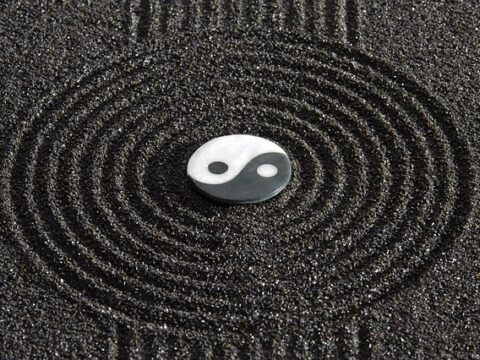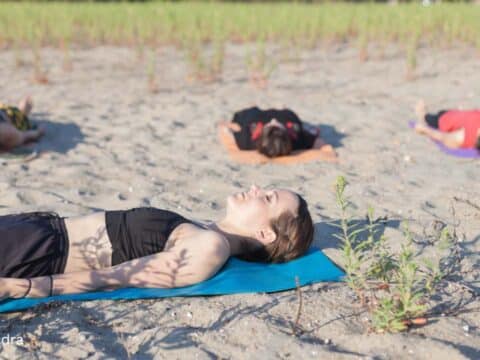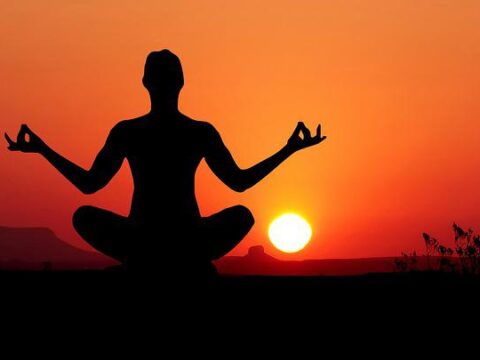To perform pranayama yoga, the practitioner must concentrate on breathing. They should practice the breathing technique in a room with fresh air. Some types of pranayama involve rapid abdominal contractions, which are not recommended for people with heart disease, breathing disorders and asthma.
Pranayama is an important part of yoga and has many benefits for the body and mind. It improves mental clarity and can reduce stress and anxiety. It also strengthens the connection between mind and body.
There are many different types of pranayama, including alternate breathing, fast breathing and slow breathing. Each form focuses on different aspects of breathing, and each is beneficial in different ways.
Podcast
In addition to the physical benefits, pranayama can improve lung function and strengthen breathing muscles. It can help people suffering from asthma and pneumonia to improve their breathing. Some people even find that pranayama helps them quit smoking. The technique can help them reduce cravings and become more mindful. It can also help people who suffer from chronic diseases such as diabetes.
People who practise pranayama can benefit from better sleep. Those who practise it before bed experience fewer “snoring attacks”. It can also help people with obstructive sleep apnoea. It may also make them less sleepy during the day.
Pranayama not only increases mental clarity and energy, but can also help people who suffer from depression. It stimulates the right hemisphere of the brain, which controls the energy level of the body. You get the best results if you practise it twice a day. You can practise pranayama anywhere. Just make sure you have a comfortable seat. Remember to keep your back and heart open and maintain a relaxed posture.
Pranayama is an effective way to calm the mind and improve your concentration. It is a great way to reduce stress, improve memory and increase alertness. Besides nasal breathing, pranayama also helps to relax the body and calm the mind. You can practise it regularly or for just a few minutes a day.
Many advanced pranayama breathing techniques involve blocking one nostril. These exercises help the energy in your body to circulate more efficiently. These techniques help you to concentrate, reduce anxiety and burn more calories than you would otherwise. Such an exercise is an excellent warm-up technique for yoga and other activities.
Best time of day for pranayama yoga breathing
The best time to practice pranayama is early in the morning. This is the time when your body has had the most time to digest and is at its most restful. Also, most people have not yet started their day at this time, so you will be less distracted and your energy level will be at its highest.
Before practising pranayama, it is best to do a few warm-up exercises. For example, breathe in deeply and slowly and exhale fully. Make sure you relax the muscles of your chest and shoulders before you start the exercise. Next, practise pranayama by focusing on the third eye.
Pranayama is an essential part of the yoga practice. Although there are no strict rules about the best time to practise, morning is generally considered the best time. Practice some breathing exercises, such as mudras, in the hours before sunrise. The sun is at its most favourable during these hours, making it ideal for pranayama.
Although pranayama can be practised at any time of the day, you must ensure that you practice regularly. Pranayama should be done in a well-ventilated room that is free from distractions. It is also important to choose a position that does not obstruct breathing.
The Hatha Yoga Pradipika recommends the lotus, thunderbolt or auspicious pose as a good choice for pranayama practice. While sitting in the lotus pose, you should keep your spine erect and straight. You can place a firm cushion under your lower back to support it.
Where to do pranayama breathing?
Where do you go to practise pranayama? Well, you can do it anywhere. You don’t need to go to a traditional yoga studio, nor do you need a special room. There are many different places in the world where you can practise pranayama.
If you are in a city, you can take a bus to a local park or yoga studio, or find a yoga class near you. If you are on a long car journey, you can practice your pranayama while driving.
In fact, there are so many ways to practice pranayama that it’s hard to limit yourself to one place.
Hints and precautions
When someone practices yoga or pranayama, they often think that these techniques are mysterious and not understood by most people. They are usually surprised when they discover that there are some very basic principles involved in the practice of these techniques.
When we say that pranayama has nothing to do with the “lungs”, it is important to understand that our lungs have nothing to do with our prana, nor does the practice of pranayama depend on our lungs. The term “lungs” is used because our lungs expand and contract and this is closest to the physical function of prana.
The practice of pranayama has nothing to do with the expansion and contraction of the lungs. However, it is quite possible that some people who do breathing exercises try to control their breathing by using their lungs.
It is true that when we exhale, our lungs expand and the air is pushed out of our body through our mouth and nose. But when we breathe in, our lungs do not expand. Instead, they stay the same size and we suck the air in through our nostrils and mouth. This is how we breathe in.
This is also true for people who do yoga or pranayama. If you focus on your breath during pranayama, you may find that you focus on the expansion and contraction of your lungs. However, if you focus only on inhaling and exhaling, you will find that your breathing neither expands nor contracts. You will find that you are simply breathing in and out.
To perform pranayama properly, you must learn to control your breath. You must be able to control the amount of air you inhale and exhale. If you don’t, you will be breathless and gasping for air. If you want to prevent this, you need to practise controlling your breath.
That is why pranayama is also called “breath work”. We control the breath in a way that allows us to increase our awareness of ourselves and helps us to develop our ability to concentrate.
It is not about getting into the “zone”. In fact, the word “zone” comes from a misunderstanding of pranayama. The word “zone” refers to a particular state of mind brought about by a change in brain waves. But it is not a state of mind that everyone can achieve. It is a state of mind
Pranayama exercises
Yogic breathing techniques, also known as pranayama, are considered helpful in preparing the body for asana practice. Common yogic breathing techniques include those that involve holding the breath or breathing forcefully or energetically. Practising the yamas and niyamas is also considered helpful in preparing for asana practice.
Ujjayi Pranayama
Ujjayi Pranayama involves deep breathing with slow, controlled diaphragmatic breathing. It is an excellent way to relax and stimulate the digestive system, lower blood pressure and relieve tension and anxiety. It also balances mind, body and spirit. It also improves concentration, increases energy and activates the nerves.
To begin, close your mouth and breathe through your nose. You should hear a soft hissing sound. Try to maintain this sound throughout your breathing session. When you have finished, exhale through your mouth. Then repeat. Continue until you can hear the sound of your Ujjayi breath.
To perform this breathing exercise, focus on inhaling and exhaling slowly and be careful to find a rhythm. The technique can be done anywhere, but you should avoid doing it while driving or operating heavy machinery. It is best to practise Ujjayi Pranayama on an empty stomach. You can also do the exercise while sitting, standing or lying down.
Ujjayi Pranayama is a powerful breath control technique that connects your mind, body and spirit. It improves your concentration and awareness and gives you more energy and stamina. Practised correctly, you will feel refreshed and invigorated. You can learn this technique in our online meditation and breathing workshop.
Sama Vritti Pranayama – Box Breathing
Box breathing is a simple breathing technique that you can do anywhere, anytime. It can help you relieve stress, increase oxygen flow to the brain and calm your mind. To perform box breathing properly, you should be in a quiet environment. You can also use headphones.
Box breathing is also known as square breathing, four-square breathing, tactical breathing and reset breathing. It is a simple and effective technique used by Navy SEALs, meditation centres and athletes to relieve stress. It is a great way to relieve headaches and anxiety, relax your body and improve your concentration.
In this pranayama, you close your eyes and breathe deeply. It can be practised by beginners and advanced practitioners. It takes two to three minutes. Start with a few breaths and then increase the duration of each cycle. Repeat the practice for 7-8 cycles.
As with all pranayama, there are many different styles and forms. Sama Vritti Pranayama is one of the simplest forms of pranayama and a great way to calm the mind. You can practice this breathing exercise anywhere, anytime and it can help you improve your meditation practice. This breathing exercise is also a great foundation for learning more advanced pranayamas.
This type of pranayama is also known as ‘purifying breath’. It is derived from Sanskrit words. Kapala means “skull” and Bhati means “light”. This breathing exercise purifies and renews your mind.
Dirgha Pranayama
Dirgha Pranayama is a breathing exercise where you fill and then empty your ribs, chest and abdomen. You should breathe alternately into the fullness and emptiness for five to six breaths. Then exhale. By doing this, you release the fullness and expand the air in your lungs.
This method is a great way to relax the body and mind. It is also known as the complete breath and is easy to do anywhere. You can practise this technique in the prone or supine position. It is also good for stress relief as it increases oxygenation.
However, there are a few precautions that you should take into consideration before practising this technique. First, consult your doctor or yoga teacher before you start. You do not want to have any breathing problems and it is better to be safe than sorry.
Dirgha Pranayama is also known as the complete breath technique. It involves deep inhalation and exhalation involving the abdomen, chest and throat. It helps to calm the mind and develop a deeper awareness. During the exercise, you should place one hand on your belly and breathe deeply. As you feel your belly fill with air, your belly expands.
Nadi Shodhana Pranayama
Nadi Shodhana Pranyama is a breathing technique that purifies the blood and the respiratory system. It is also useful for relieving headaches and nervousness. The breathing exercise begins with inhaling through the left nostril and exhaling through the right nostril.
The name Nadi Shodhana comes from the Sanskrit word shodhana, which means purification or cleansing. It is performed cross-legged. First, hold the right nostril closed with your thumb. Then close the left nostril with your ring finger. After a few seconds, breathe out slowly and consciously through the right nostril. Repeat this breathing exercise for about 10-20 rounds.
This breathing exercise is beneficial for both the left and right nostril. Make sure that you are not congested. It is important that you do this breathing exercise on an empty stomach. It is not recommended for people who are sick or congested. You should also close your nose and mouth before starting this breathing exercise.
It is important to remember that Nadi Shodhana requires slow, deep breathing. It is not for beginners, so it is important that you see a qualified teacher to learn it properly. Advanced practitioners can also incorporate other breathing techniques such as holding the breath and proportioning the breath duration.
The nadis are networks of subtle energy channels that nourish the body and mind. These pathways are often clogged, but Nadi Shodhana helps to clear them. It also helps to control blood pressure.
Kapalabhati
Kapalabhati is a breathing technique that consists of alternating short, explosive exhalations with slightly longer, passive inhalations. The exhalation is produced by powerful contractions of the lower abdomen that push the air out of the lungs.
The inhalation occurs in response to the release of this contraction, drawing the air back into the lungs. You can begin this technique sitting or in a reclined position, placing your fingers lightly on your abdomen.
Concentrate on your lower abdomen. If necessary, place one hand lightly in the other and press gently against your lower abdomen. (With practice you will be able to control your belly better and the hands may no longer be necessary).
Now quickly contract your lower abdomen, pushing a burst of air out of your lungs. Then quickly release the contraction (or your hands) so that the belly “springs back” and sucks air into your lungs. Go slowly at first.
Repeat the exercise eight to 10 times with about one exhale-ina breath cycle every one to two seconds. As you become more practiced at contracting/releasing your lower abdomen, you can increase your pace to about two exhale-inhale cycles per second. Imagine that the exhalation sweeps out or “lightens up” the inside of your skull.
Do 25 to 30 cycles initially. Gradually increase the number of cycles you do per exercise to 100 or more.
Summary
Pranayama may seem mysterious to some at first, but over time you can refine it with practice. It is important to start practising without aiming for a specific goal or outcome, as this can lead to deeper, more transformative results.
The breath is not just air, but a subtle and powerful force that affects everything in our lives, from the moment we are born to the moment we die. It is a constant companion, always with us, and it is vital to our existence.




